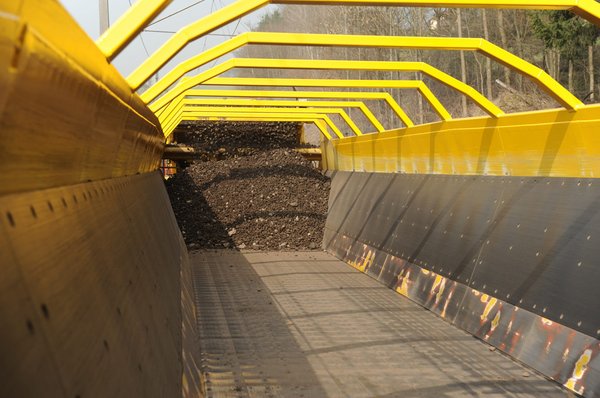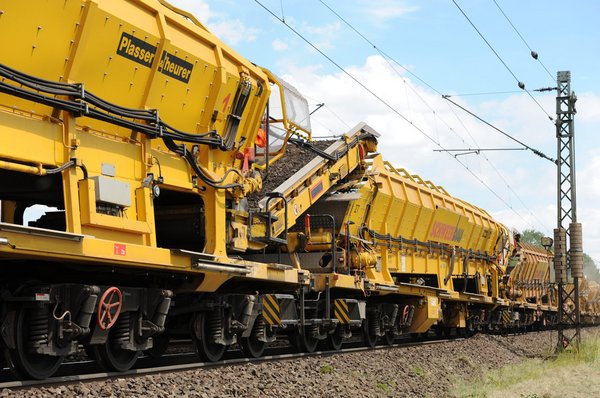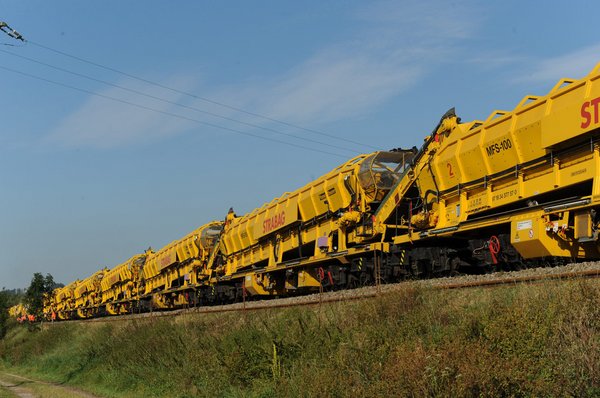Bringing large quantities of material onto the rail:
Construction work on the railway involves shifting enormous quantities of material in a short time. Thousands of cubic metres of excavated material and new material have to be loaded into wagons and transported. Efficient material logistics have a decisive influence on the efficiency of the sequences, the duration of the construction work and ultimately on the cost-effectiveness of the projects.
Material conveyor and hopper units of the MFS series demonstrate how state-of-the-art material logistics function. Intervals between trains can be better utilised, sections of track can be reopened to traffic earlier and scheduled traffic can continue on the adjacent track. Therefore, material conveyor and hopper units can make an important contribution towards raising the overall annual outputs of ballast cleaning machines or formation rehabilitation machines.
Highly developed machine systems for ballast bed cleaning and formation rehabilitation set huge flows of material in motion. But their efficiency can only be fully utilised when old and new material are brought in and taken away equally quickly. Material conveyor and hopper units made by Plasser & Theurer operate synchronously with these machines. That means the material logistics are handled at the speed set by the high-capacity machines.
Material conveyor and hopper units are also important in combination with powerful ballast management systems. As mobile storage units they transport surplus ballast to wherever it is required. That saves on intermediate storage and the associated transport runs.
In track maintenance material logistics consists primarily of storing, transporting, loading and unloading large quantities of material swiftly. All storage, transporting, loading and unloading can be performed in completely mechanised processes using the material conveyor and hopper units. Every kind of loose material can be transported, from spoil or ballast to the sand/gravel mixture needed for a formation protective layer. And the adjacent track remains open for traffic. For single-track lines this method is the only possible way to take away material effectively and in an environmentally friendly way.


